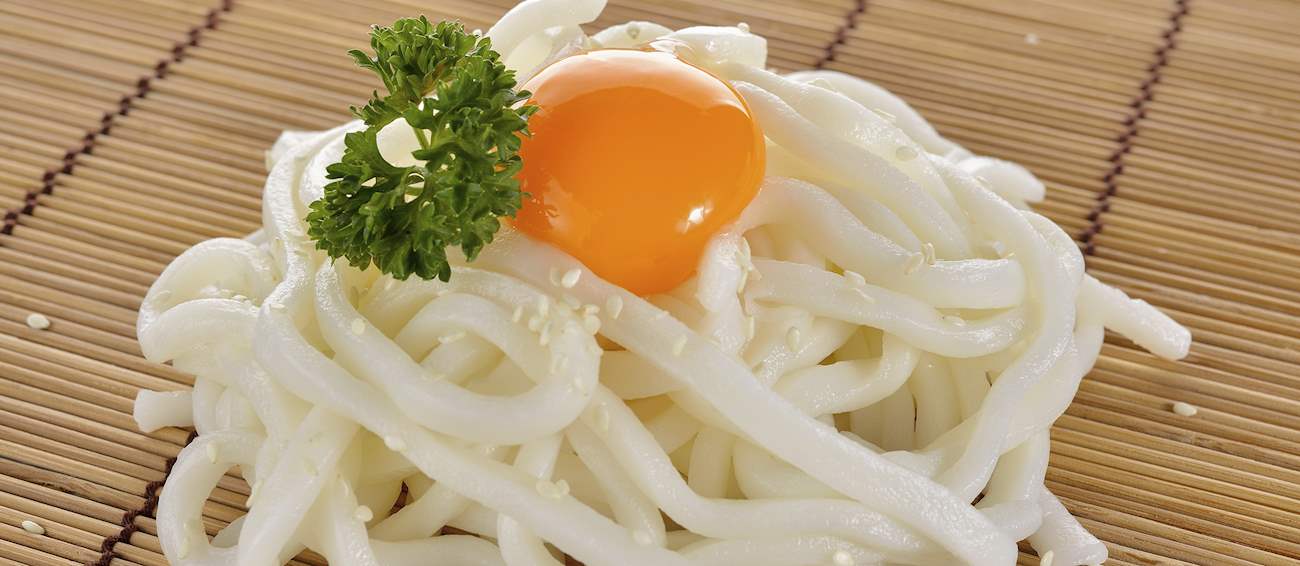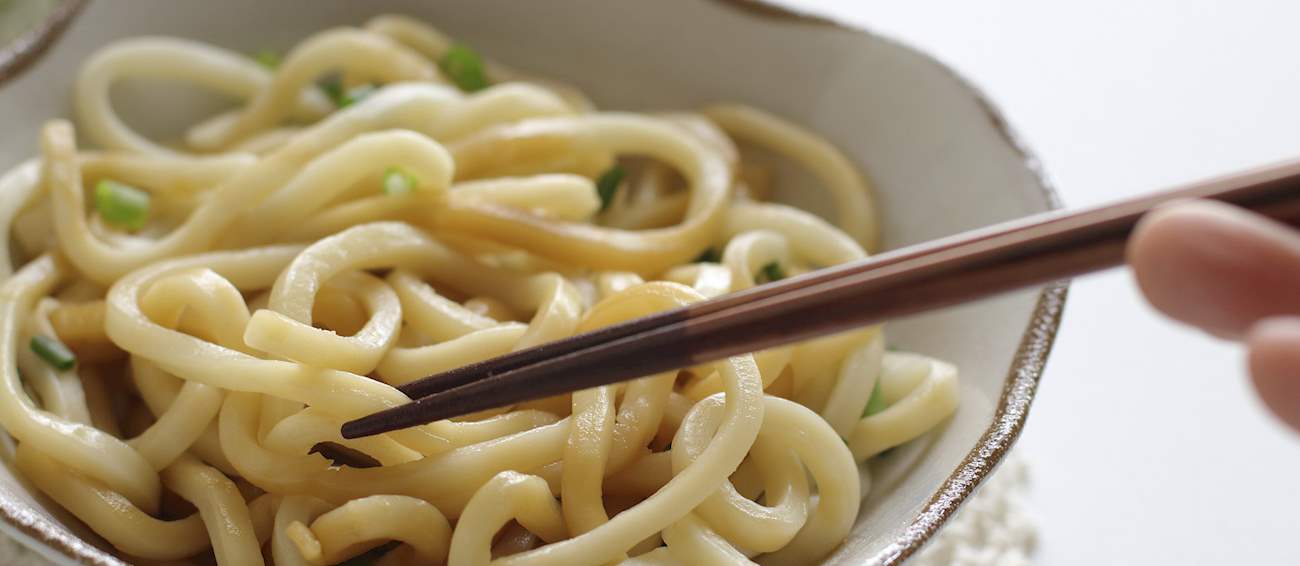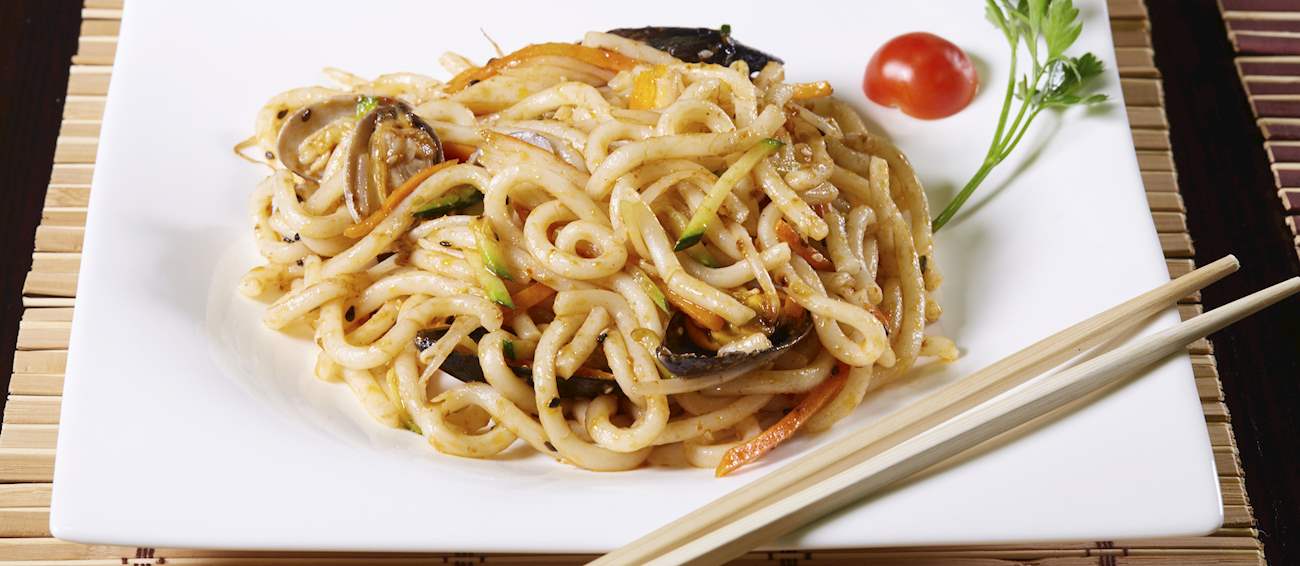Udon noodles
(饂飩, うどん, )
These thick and chewy Japanese noodles are made with wheat flour, and along with soba, they are one of the most popular and most common Japanese noodle varieties. The traditional and most common form of udon is characterized by its round shape, firm texture, and substantial size.
However, there are also many regional varieties that differ in size and thickness. A staple of Japanese cuisine, they are used in numerous traditional dishes and local specialties. In their simplest form, udon noodles are served in kake udon, a refreshing noodle soup with a flavorful broth made with soy sauce, dashi, and mirin.
Western Japanese style kake udon usually has a thin broth, while it is usually thicker and richer in the eastern part of the country. Kake udon is usually served hot, but udon noodles can also be served in a cold broth, a dish that is mostly consumed during the warmer seasons. Read more
Traditional condiments served on top of or alongside udon noodles depend on the season, and they often include sliced spring onions, tempura-battered vegetables or shrimp, fried tofu, or rice cakes. Numerous stories surround the origin of udon noodles, but most of them agree on the fact that udon was originally Chinese and was probably brought to Japan by Buddhist monks.
Initially, they were a type of food that was reserved exclusively for the upper-class citizens, while buckwheat soba noodles were consumed by the lower classes. This relationship has reversed in modern times, and nowadays udon noodles are less expensive and more easily produced than soba.
The noodles are traditionally eaten with chopsticks, then slurped down loudly as they are being consumed. If served in a broth, the liquid is drunk directly from the bowl without the use of any utensils. The Japanese typically eat udon at specialized udon-ya restaurants, local eateries, and buffet-style restaurants which offer additional condiments. They have become a recognizable Japanese product, and dried, pre-packed udon can be found in international stores and well-stocked supermarkets all over the world.




